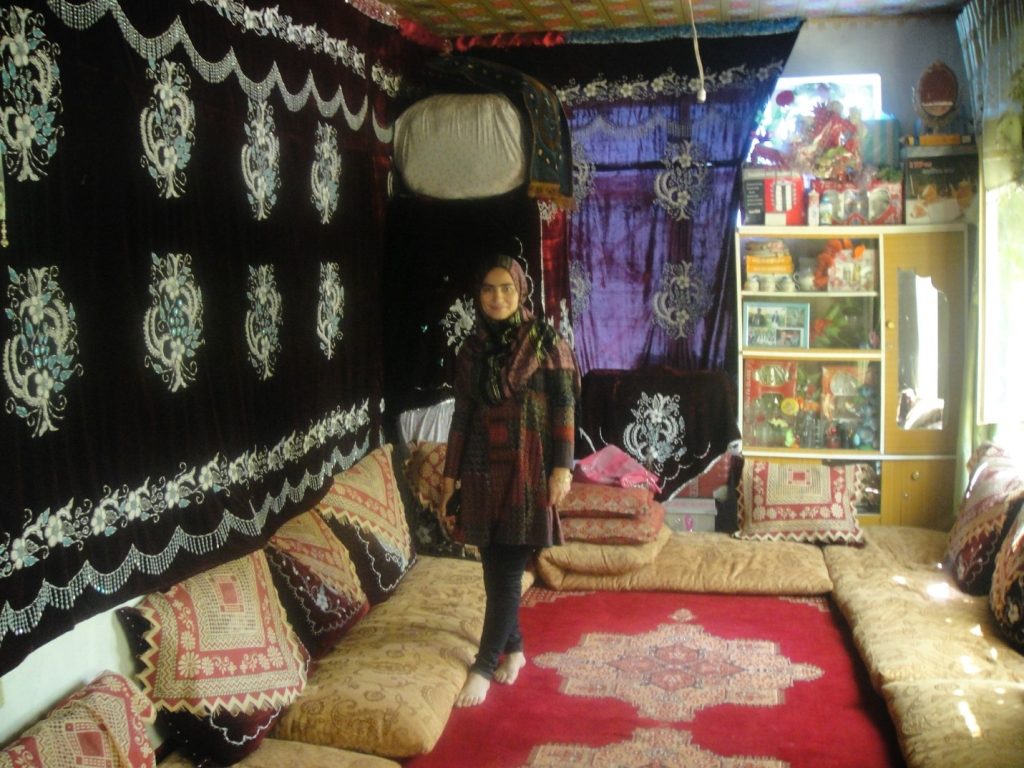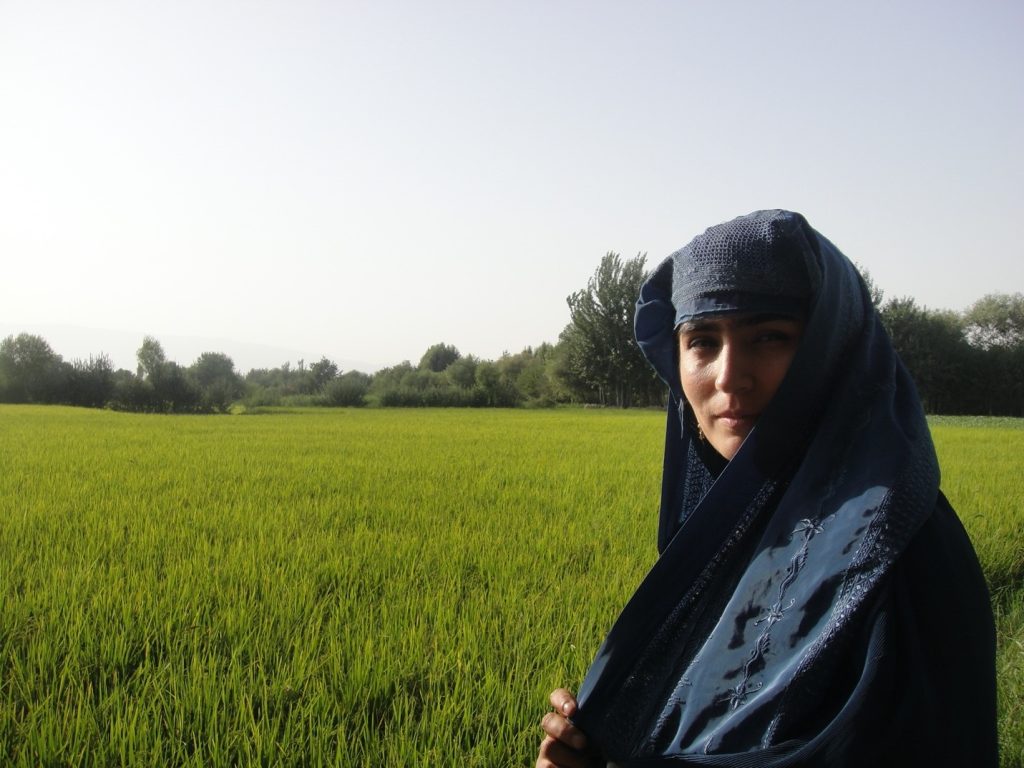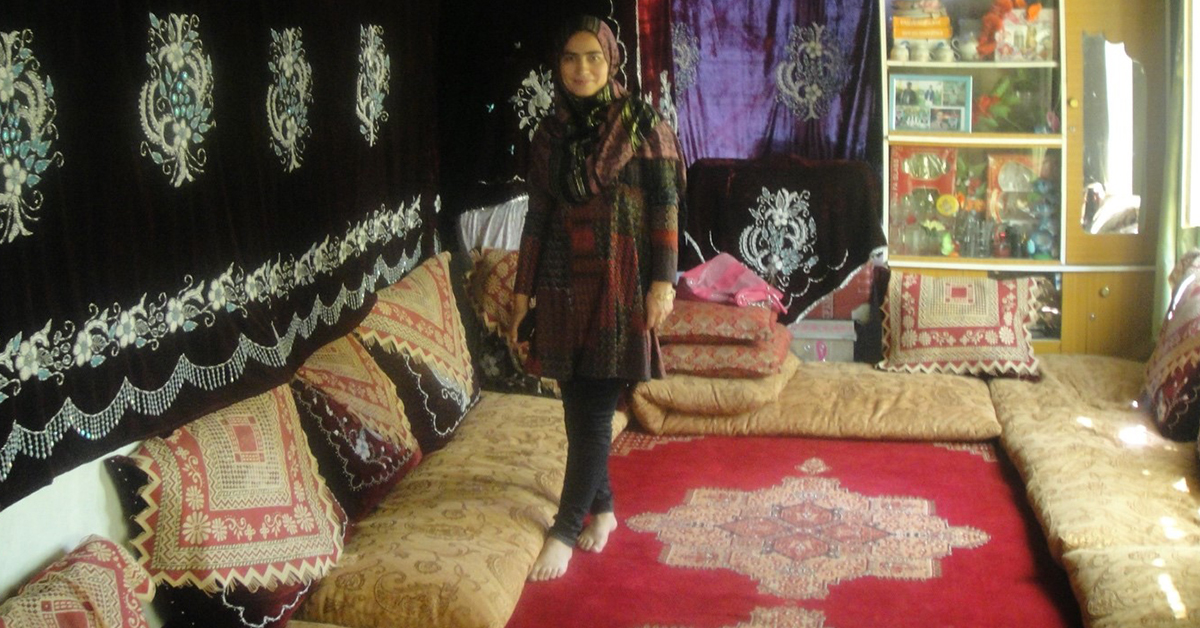
By Wolayat Tabasum Niroo
In the northeastern provinces of Afghanistan, talented women sing folk songs to entertain each other in female-only gatherings on happy occasions. The songs are accompanied by a diara or daff, a colorful frame drum made of goat or cow skin. In private, women hum the songs and do not need musical accompaniment. Humming songs in private is likened to what Rumi called “wailing of the broken heart,” or “dard hay dilim,” as the women say in Dari, one of the languages used locally.

Usually, one or two women play the daff and sing. The audience claps, and the rest listen attentively. The lyrics typically resonate with the listeners’ life experiences. Through songs, women tell a story or express feelings that amplify other women’s voices.
Song themes vary depending on whether women sing in social gatherings or in private. They also vary with the singers’ ages and life experiences. The song themes are often centered around the stories of womanhood, marriage, and the migration of their sons. Many women sing about unhappy marriages – or the pain of losing their loved ones in war.
Women’s songs are called chaharbeiti or dubeiti; they are like quatrains and couplets in the English language. In the Dari or Tajiki language, folk songs contain a two or four-line refrain repeated after each chaharbeiti or quatrain, whereas Uzbek folk songs are free of such choruses. Although folk songs’ authors are unknown since they are not recorded or written, some women claim the authorship of their songs and compositions. Others adapt songs from a broader group of women’s arrangements, reworking their details for a specific village or town.
These songs help women imagine an alternative to their existing circumstances as wives who are neglected and mothers who struggle. As suffering mothers who lost their sons on the frontline, they imagine joining them in Heaven while wailing for their absence. As oppressed wives, they imagine an alternative lifestyle in which sons grew up and take better care of them. Yet it is not only grown-up women who sing for their sons, husbands, and brothers. Young girls are taught to sing about their brothers from a young age.
Women’s songs reveal how girls from a young age are taught to support their brothers, not only through preparing their meals, washing their clothes and so on, but also by composing songs and imagining a successful life and becoming as powerful as qomandans or warlords. The songs offer a window onto how mothers, wives, daughters, and sisters make sense of their lives and how they simultaneously nurture masculinity while resisting patriarchy. They gain social status and protection if the men in their families are powerful.
I conducted this research in the summer of 2013. I am not sure if the girls and women I interviewed will ever be able to sing, play the diara, or taking turns dancing. In the past some women were not free to express their inner feelings in a gathering beyond their immediate circle of trusted friends. Today they are fearful of the oppressive regime that has been harsher on women than men. Moreover, I am not sure if I can return and conduct fieldwork in that corner of Afghanistan ever again.
Under Taliban rule, women in Afghanistan fear for their lives and forsee a dark future, without education, employment, and basic rights. Even if they sing in private, their song themes might be altered directly or indirectly by the climate of political and social oppression, yet another form of oppression on top of all others they have endured.

Read Wolayat Tabasum Niroo’s article from Volume 4, Issue 2 of Afghanistan: ‘Nurturing Masculinity, Resisting Patriarchy: An Ethnographic Account of Four Women’s Folk Songs in Northeastern Afghanistan’.
Afghanistan is the journal of The American Institute of Afghanistan Studies, dedicated to the cross-cultural study of Afghanistan and its surrounding regions, delving into its rich history from a wide variety of humanities-focused angles. The journal covers all subjects in the humanities including: history, art, archaeology, architecture, geography, numismatics, literature, religion, social sciences and contemporary issues from the pre-Islamic and Islamic periods. Find out how to subscribe, or recommend to your library.






